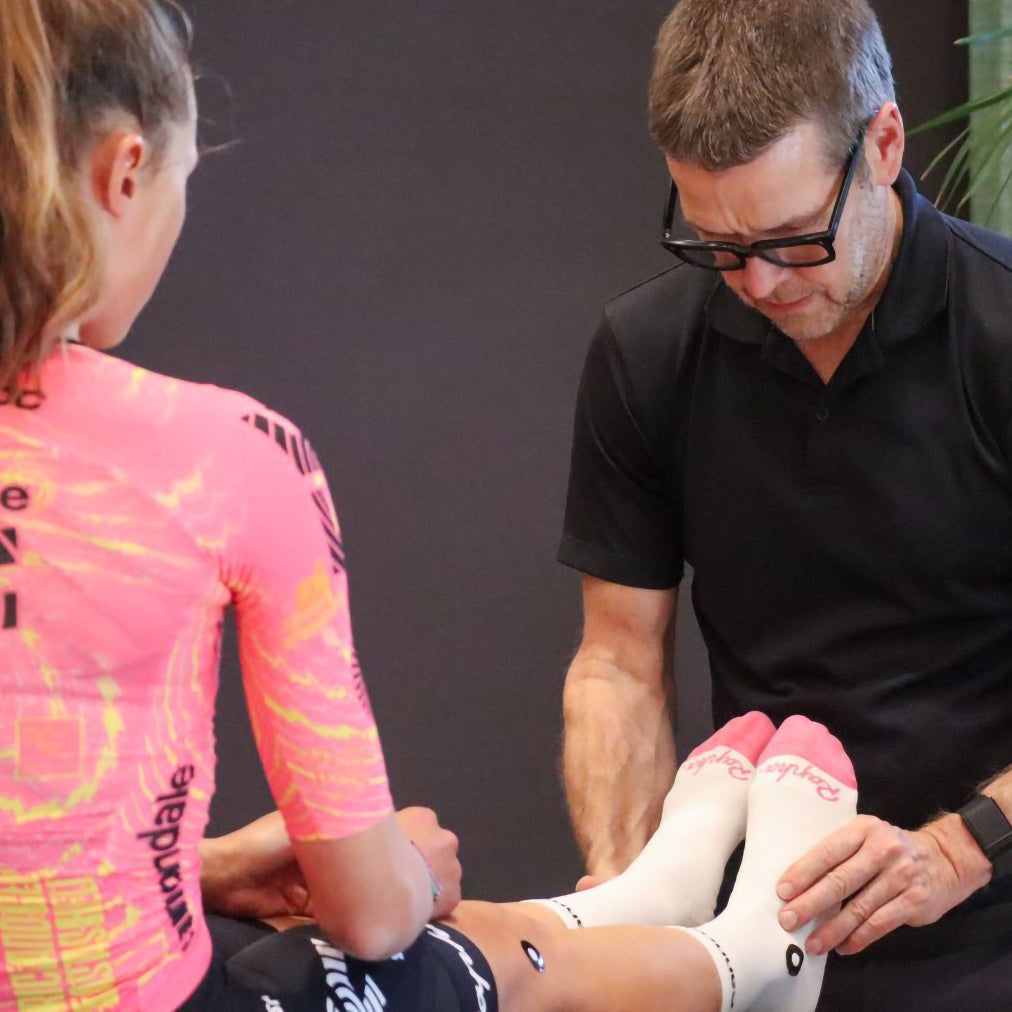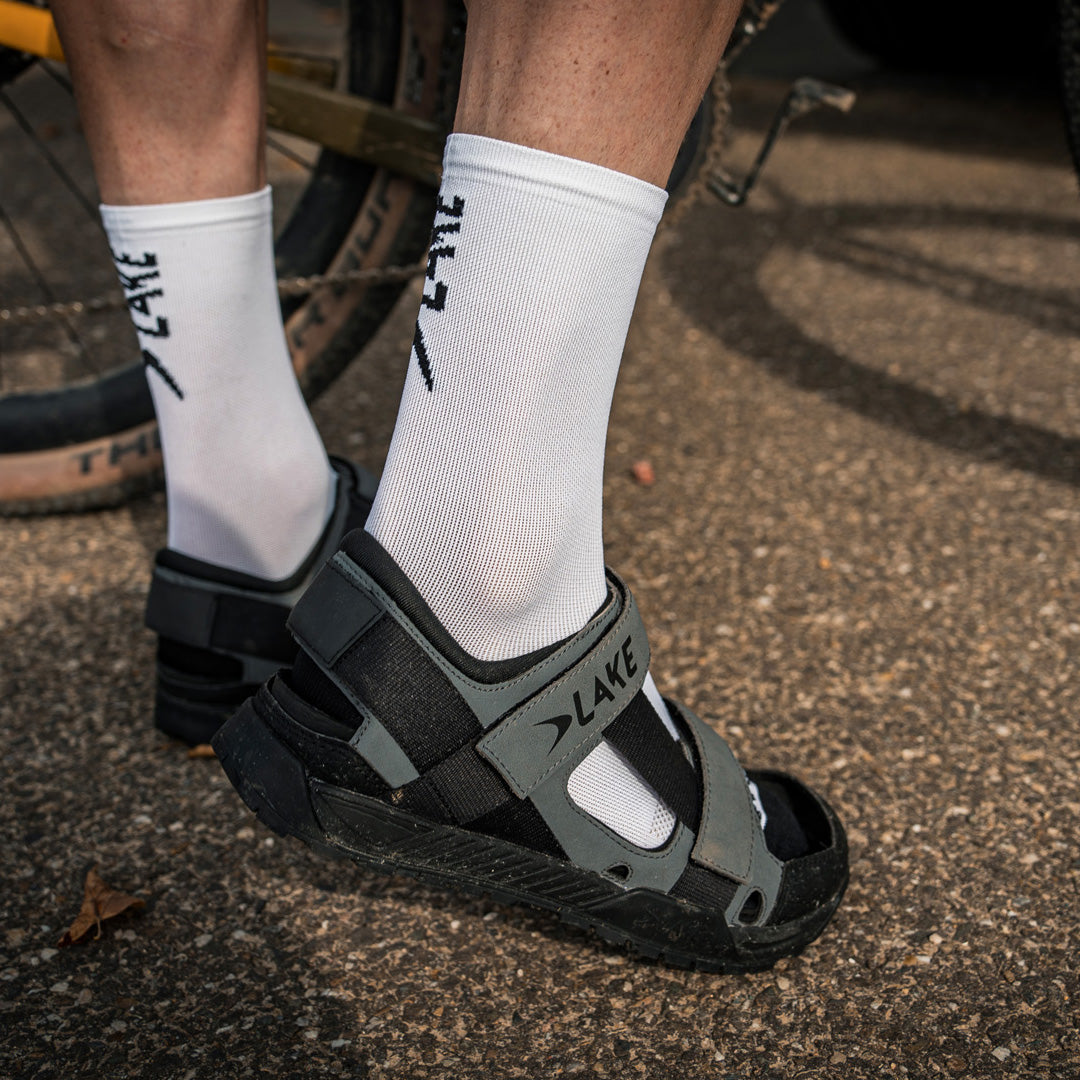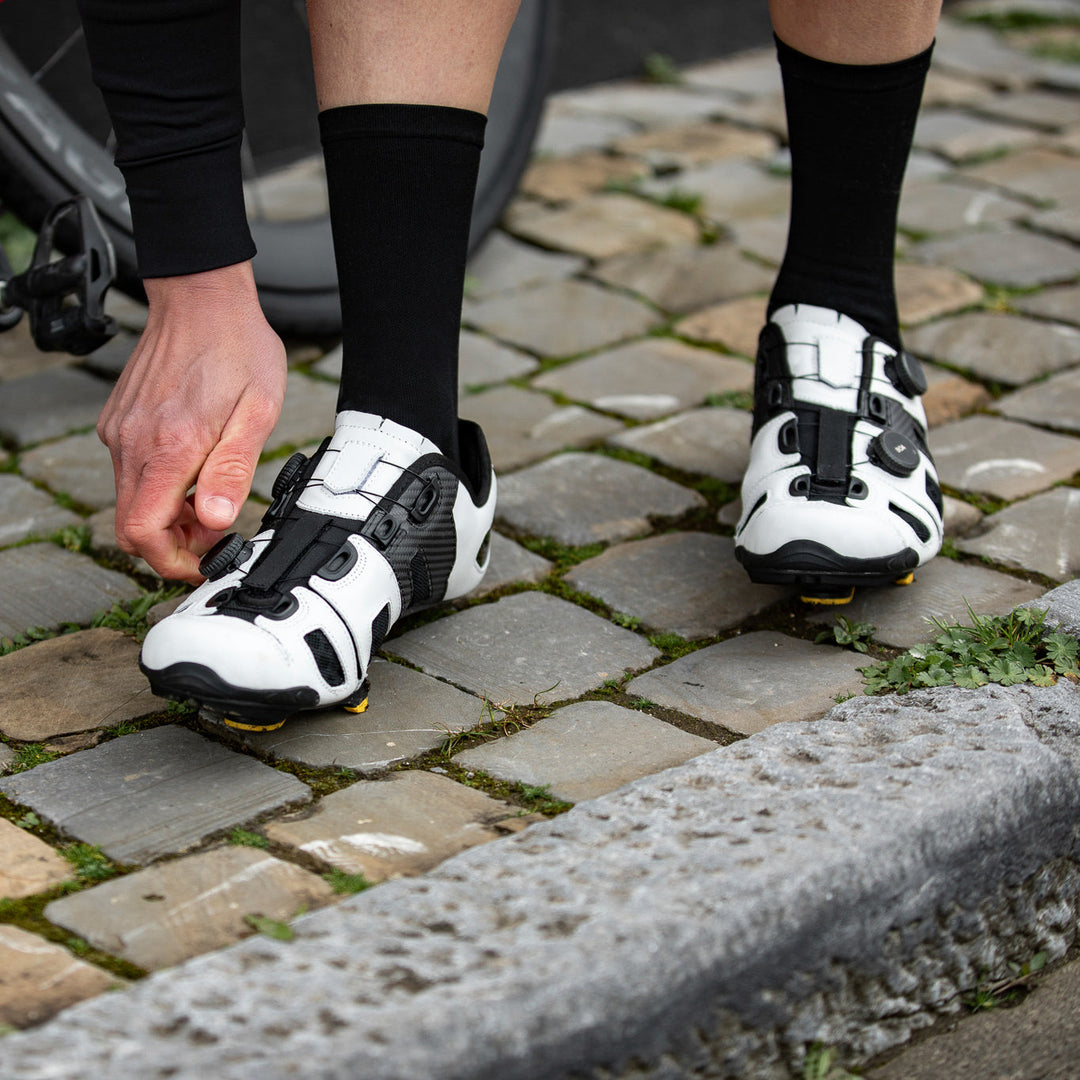Painful feet and cycling shoes

Finding the most comfortable cycling shoes
Your feet are probably the most important of the three contact points on a bike. Ultimately, having painful feet from ill-fitting cycling shoes, can then cause significant issues further up the body. Many cyclists experience painful feet, for a variety of reasons, leading to unhappy rides and an inability to maximise their cycling performance.
Our feet come in many different shapes and sizes, and their width can vary between cultures as well. When wearing sandals in a hot climate, the feet are less restricted and can naturally spread out more. By contrast, road cycling shoes—traditionally designed to be slim and sleek—often prioritize aesthetics over comfort. This design can lead to numerous issues, such as hotspots and nerve compression, ultimately leaving cyclists with persistently painful feet while riding.

Finding your fit in cycling shoes
Narrow toe box or too narrow cycling shoes
Painful feet from cycling shoes are often the result of an improper fit, shoes that may be the wrong size, the wrong width, or that simply don’t provide the right volume. All these factors can cause discomfort and pain for cyclists, particularly in the toe box or forefoot area. An ill-fitting toe box that is too narrow or too tight can compress the nerves, leading to a burning sensation in the foot.
This “hot foot” sensation can also be linked to poorly fitting shoes around the midfoot and across the instep (especially when sizing up to gain width in the toe box). In such cases, cyclists often over-tighten their shoes to achieve a secure fit, which can further compress the nerves in the foot. Hot foot may also result from compression in the ball of the foot, again leading to nerve-related issues. As we consistently remind cyclists: it is essential to have your feet properly measured to minimize the risk of pain caused by ill-fitting cycling shoes.
High arch and a lack of arch support
Other issues to avoid are a lack of arch support in your cycling shoes. When measuring your feet for cycling shoes, most retailers – and indeed, many cycling shoe brands – will go by the length of your foot as the sole parameter – no pun intended! If you’re lucky, they may also address the width of your feet, and hopefully – but not always - offer you a selection of cycling shoes in width fittings.
On the underside of the foot, the curvature and high arch relate to the arch and its height – a high arch will need supporting and is as important as both length and width to reducing pain in cycling shoes. There are various ways of measuring this yourself – which you can find out on our website by clicking the link here
You can also visit a specialist bike fitter or one of our Lake cycling shoe retailers, all of whom are trained to accurately measure your feet and help alleviate foot pain. In brief, a high instep or high arch can be identified by the gap between the imprinted forefoot and heel area. The way the shoe sole is constructed—using the correct shoe last—alongside the design and construction of the upper, will provide the necessary support for your arch. One size can never fit all when it comes to cycling shoes, which is why we place so much emphasis on designs that are built to be pain-free when properly fitted.
Custom insoles can be a real game-changer in eliminating foot pain, as they help support the metatarsal heads. Your feet are unique, and if you want to avoid discomfort when wearing your cycling shoes, it’s important to have them properly measured and let the experts help you find your fit. We recommend custom insoles for all cyclists, as they are the final step in ensuring your feet are well supported and pain-free.
 Incorrect cleat placement
Incorrect cleat placement
Incorrect cleat placement on your cycling shoes can also cause you to have painful feet and those “hot spots” that we mentioned earlier. If the foot is in the wrong position on the pedal, and indeed in an ill-fitting shoe, then those nerves in the foot are going to be affected.
The pain could also be down to the repetitive stress from the intense or prolonged pedalling action, with your feet not being in the correct position on the pedal. The cleat itself may need float, to allow for your foot/knee have natural unrestricted range of motion. Here at Lake, our high-performance cycling shoes have cleat positioning guides on the soles of the shoes, and this can help you and a professional bike fitter find the position that suits you. We’ll be writing more about this in another cleat positioning blog.
Time and time again, we tell cyclists that having incorrectly positioned cleats can lead to hot spots from nerve compression - painful feet – or knee pain from having your legs and feet misaligned.
All of this can work up the body and cause more stresses – in the hips, the back, the shoulders and elsewhere. We are a very connected and complex entity, and painful feet when cycling could also be the cause of other health issues. Thankfully though, these can be more easily overcome than you’d imagine, by moving the cleat further back or changing the fore/aft positioning to ensure that the foot angle is aligned with the metatarsal heads. As I say too, look at the amount of float that the cleat has and ensure that you use the correct cleat with the correct float, to allow your cycling feet to move naturally.

Adjustability and fit
Boa or Laces – giving you the option
If your cycling shoes have limited adjustability too, this can also cause painful feet when cycling. At Lake, we use the industry leading BOA dial system across our range, in various configurations that work for the range of cycling models we design – on road, off-road and for bikepacking adventures. We also have many cycling shoe options with laces, to give you that ultimate in adjustability.
Fitting cycling shoes should also take into consideration how your feet swell in hot conditions. This tightness and compression can cause painful feet when wearing cycling shoes all day long; and it’s why we build breathability into our cycling shoe range, such as with the new CX20R, which also comes in a women’s specific cycling shoe.

Bunions and foot shapes
We constantly write about foot shapes and how we at Lake work with so many different shoe ‘last’ shapes and options, to ensure that you can always find your fit and benefit from our legendary cycling shoe comfort. Our CX242 and MX242 is a culmination of all our experience, advanced materials, and shoe making techniques to make a shoe that offers the best fitting solution for hard to fit foot types. Made with a heat moldable heel counter and a uniquely designed upper that has enough adjustability to accommodate riders with bunions, deformation, narrow or wide feet, or a high or low instep.
The separated upper panels allow for fine tuning the fit, relieving pressure from sensitive and painful spots on the feet. Alongside the BOA® Fit System, where the Li2 dial – the most advanced in the BOA range - offers a precise, micro-adjustable fit in both directions, the CX242 is the most adjustable cycling shoe for problem foot shapes in the cycling shoe industry.
Don’t accept painful feet when cycling
No cyclist should have to accept painful feet when cycling. Since 1982, we’ve been researching and innovating in cycling shoe design, to ensure that Lake cycling shoes provide the very best fit and comfort available to all cyclists – on road or trail. Why not treat your own feet some our legendary comfort, and ride into a pain-free future as a member of the Lake cycling family – the world’s most comfortable cycling shoes!







Leave a comment